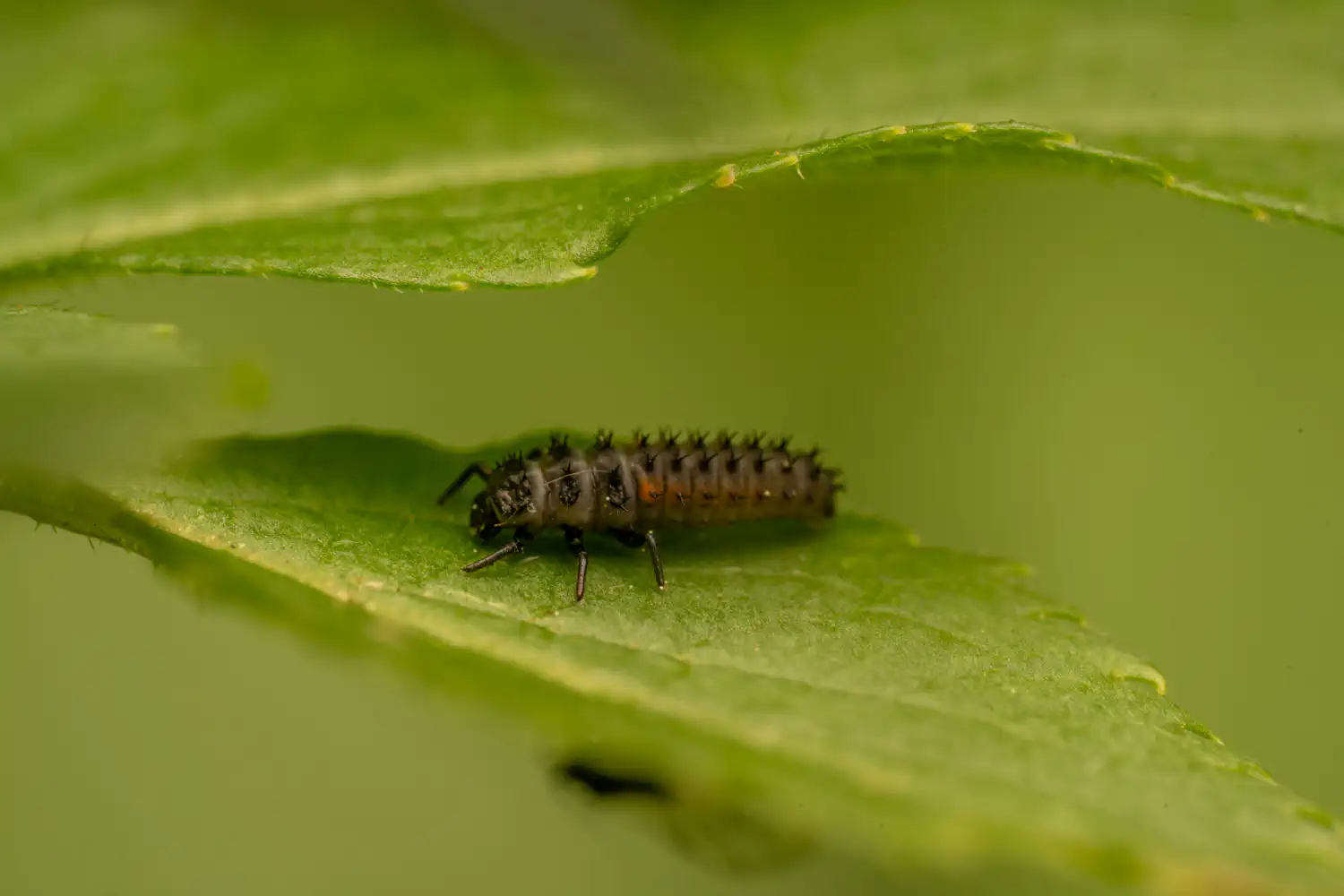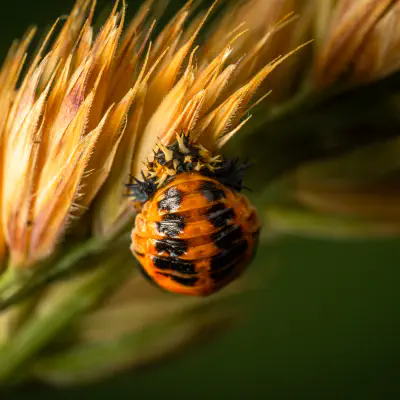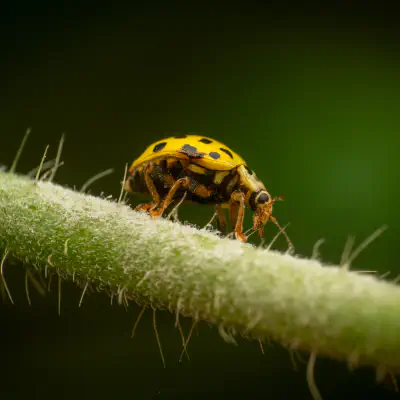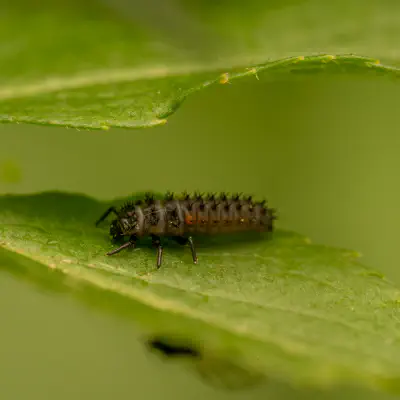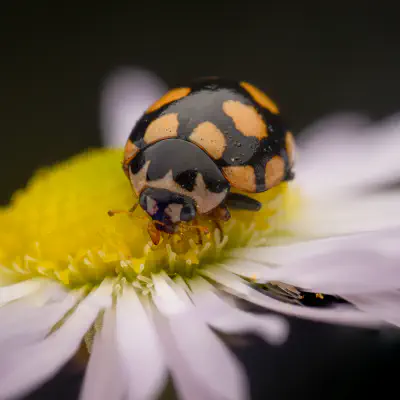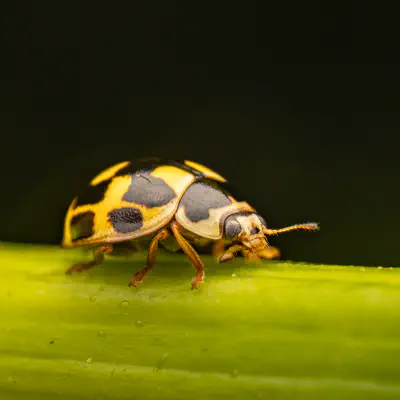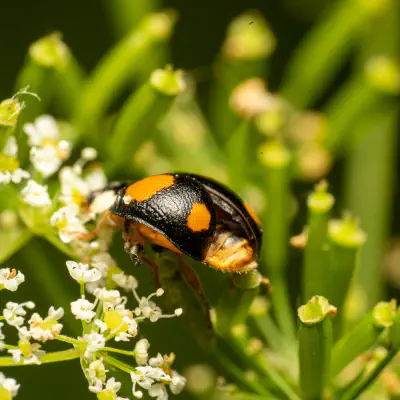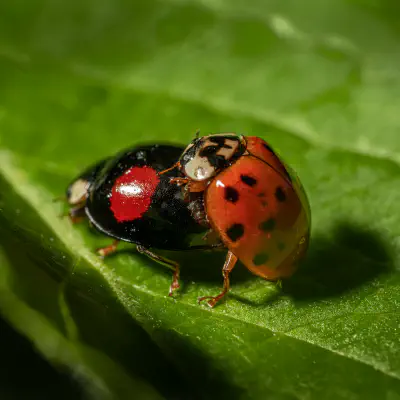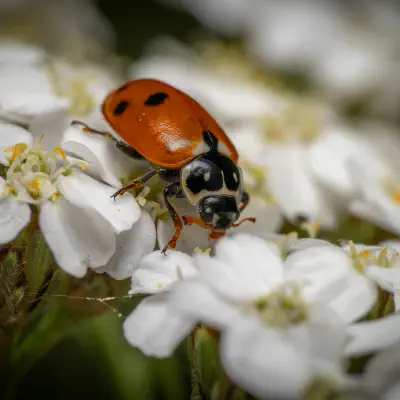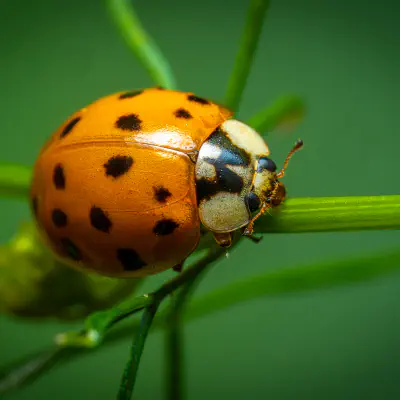Lady Beetles Lat. “Coccinellidae“
Coccinellidae (/ˌkɒksɪˈnɛlɪdiː/) is a widespread family of small beetles ranging from 0.8 to 18 mm (0.03 to 0.71 inches).
Hierarchy
Etymology
The name Coccinellidae, created by Pierre André Latreille in 1807, is derived from the Latin word coccineus meaning ‘scarlet’. The common English name ladybird originated in Britain where the insects became known as “Our Lady’s birds”. Mary (“Our Lady”) was often depicted wearing a red cloak in early art, and the seven spots of the species Coccinella septempunctata (the most common in Europe) were said to represent her seven joys and seven sorrows. In the United States, the name was popularly adapted to ladybug. Entomologists prefer the names ladybird beetles or lady beetles to avoid confusion with true bugs. Names in some other countries may be similar; for example, in Germany they are known as Marienkäfer meaning ‘Marybeetle’ or ’ladybeetle’.
Description
Coccinellids range in size from 0.8 to 18 mm (0.03–0.7 in). Adult females tend to be slightly larger than males. They are generally oval with domed backs and flattened undersides. They have large compound eyes and clubbed antennae with seven to eleven segments. The powerful mandibles (equivalent to jaws) typically have pairs of “teeth” which face each other. The coccinellid prothorax (front of thorax) is broad and convex, and can cover the back of the head. Being beetles, they have hardened, non-overlapping forewings, known as elytra, which cover up the more fragile hindwings when the insects are not in flight. Their legs are relatively short, with a tarsal formula of 4-4-4 (may appear 3-3-3 because the third segment of each tarsus is reduced). The tarsus (end of leg) has two claws at the tip. As adults, these beetles differ from their closest relatives with the following morphological characteristics:
Five pairs of spiracles (holes) on the abdomen A tentorium (internal supports inside the head) with separated branches at the front and no bridge No line dividing the frons and clypeus (frontoclypeal suture) Maxillary palps with non-needle-shaped tips, Divided galea and lacinia (lobes at the end of the mouthparts) Smaller molar (flattened) area of the mandible Coxal cavities (holes where the leg articulates with the thorax) that open from the back in the front of the thorax and from the front in the middle of the thorax Epimeron (corner plates) on the metathorax with parallel edges Lines on the second abdominal sternum Tube-shaped, siphon-like genitalia in the male Coccinellids are often distinctively coloured and patterned. The elytron may be light with dark spots or dark with light spots. Light areas are typically yellow, red, orange or brown, and the spots vary in size and shape and numbers. Some species have striped or checkered patterns. The pigment carotene creates the lighter colours, and melanins create darker colours. Other parts of the body also vary in colouration. These colour patterns typically serve as warning colouration, but some can act as camouflage, attract mates or even regulate heat. Several individual species may display polymorphism and even change colour between seasons. Coccinellid larvae are elongated with square heads. They are covered in hairs or setae, the abdominal segments, in particular, each having six divided into pairs, and one to three segmented antennae. Their colouration varies from grey, blue-grey, grey-brown or brown and spotted with white, yellow, red or orange. They tend to brighten as they get closer to adulthood.
Distribution and status
Coccinellidae are found on every continent except Antarctica. Asian and African species are less studied than others. Coccinellids can be found in a variety of habitats, both on the ground and in the trees. They may specialise using certain plants. Some species can live in extreme environments such as high mountains, arid deserts and cold regions. Several of the most famous species have wide ranges, but others are more endemic and possibly threatened. Threats to coccinellids include climate change, agriculture, urbanisation, and invasive species. Coccinellid biodiversity will likely be affected by the rising of both average temperatures and heat fluctuations. Climate change may lead to smaller larvae, as well as increase energy and metabolic needs and interspecific predation. Agriculture and urbanisation threatens these insects though habitat destruction and homogenisation and the use of pesticides. Invasive threats include other coccinellids, particularly C. septempunctata in North America and H. axyridis globally. These invaders outcompete the native species as well as eat their eggs. As of 2022, the IUCN Red List does not list the conservation status for any coccinellid, though there is an IUCN SSC Ladybird Specialist Group. Conservationists have suggested several measures for protecting the insects, including citizen science and education programs, habitat preservation and restoration, prevention of the spread of invasive species and a global monitoring program.
Sources
Hodek, I.; Honěk, A. (1996). Ecology of Coccinellidae (Series Entomologica, 54). Springer. ISBN 978-0792341772. Hodek, I; Honěk, A; Van Emden, H. F., eds. (2012). Ecology and Behaviour of the Ladybird Beetles (Coccinellidae). John Wiley & Sons. ISBN 978-1-118-22321-5. OCLC 792685088. Majerus, M (2016). Roy, H. E.; Brown, P. M. J. (eds.). A Natural History of Ladybird Beetles. Cambridge University Press. ISBN 978-1-107-11607-8.
External links
Media related to Coccinellidae at Wikimedia Commons Data related to Coccinellidae at Wikispecies
Ancestry Graph
Further Information
„Lady Beetles“ on wikipedia.org
„Lady Beetles“ on iNaturalist.org
Copyright

This article uses material from the Wikipedia article Coccinellidae the free encyclopedia Wikipedia which is released under Creative Commons Attribution-ShareAlike 4.0 International License). On Wikipedia a list of authors is available.

Little beings in print
Order our calendars and books today!
Compiled with love. Printed sustainably. Experience our little beings even more vividly in print. All our publications are available for a small donation.

